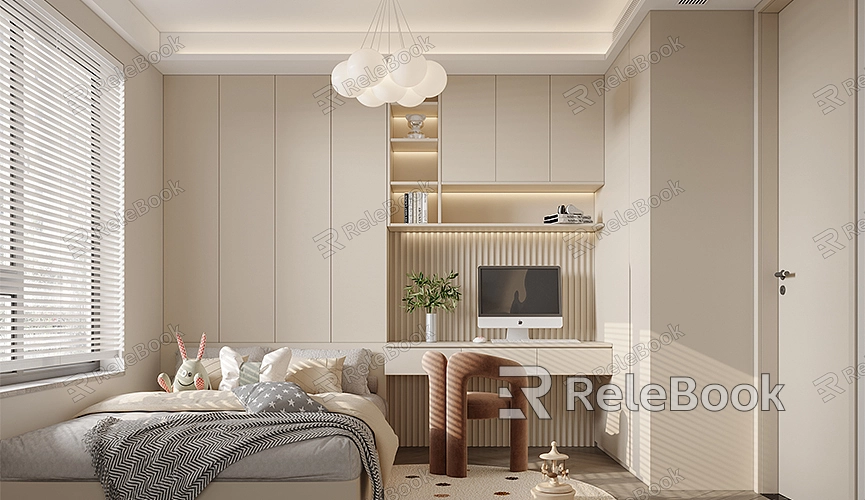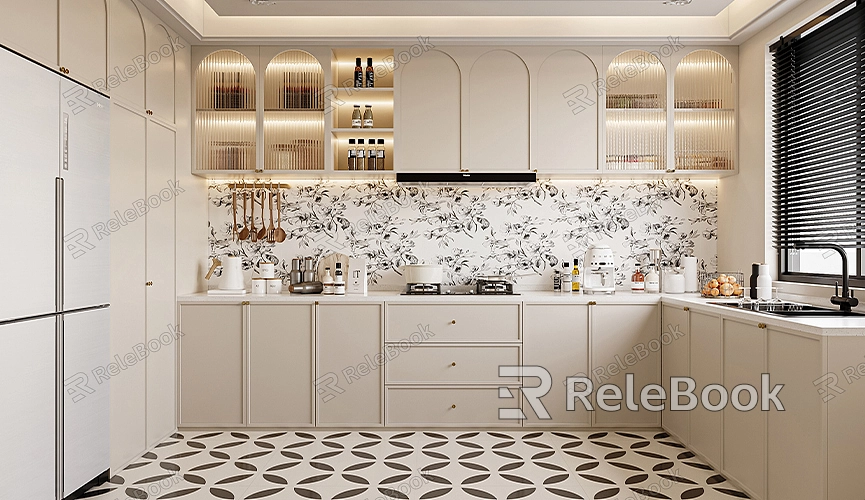How to Make 3D Model of Room
Creating a 3D model of a room can help you visualize design concepts better or create realistic scenes for games, animations, and virtual reality projects. In this article, we’ll provide guide on how to create a 3D room model using Blender, from initial setup to final rendering and optimization.
Preparation

Before you start modeling, you need to prepare some tools and resources. First, download and install Blender, a free and open-source 3D modeling software. Additionally, gather some floor plans and reference images of the room to use during the modeling process.
Create the Basic Structure
After opening Blender, start by creating the basic structure of the room. You can use "Plane" or "Cube" objects to represent the floor and walls.
1. Create the Floor: Select “Add” from the menu, then choose “Plane” and adjust its size to match the room's dimensions.
2. Create the Walls: Add “Cube” objects, scale and move them to form the four walls.
Add Details
Next, add various details within the room, such as doors, windows, and furniture.
1. Doors and Windows: Use the “Boolean” modifier to create openings for doors and windows in the walls. Add new cubes and adjust their size and position to form door frames and window frames.
2. Furniture: You can either download pre-made furniture models from the internet or create simple furniture models yourself. Place them in appropriate locations within the room.
Apply Materials and Textures

To make the room look more realistic, you need to apply materials and textures to the model. Blender offers powerful material and texture tools to create various effects.
1. Select Materials: In the “Material” panel, add new materials to each object. You can use Blender's built-in material library or download high-quality materials from the internet.
2. Apply Textures: In the “Texture” panel, add textures to the materials. Use UV mapping tools to ensure textures are correctly applied to the model’s surface.
Set Up Lighting and Camera
To achieve realistic rendering, you need to set up appropriate lighting and camera.
1. Add Lighting: In the scene, add “Point Light” or “Area Light” and adjust their position and intensity to simulate natural or artificial lighting.
2. Set Up Camera: Add a camera in a suitable position and adjust its angle and field of view to capture the best perspective.
Render and Export
Once you’ve completed the model details and set up lighting and camera, you can start rendering. Blender offers various render engines like Cycles and Eevee, which you can choose based on your needs.
1. Choose Render Engine: In the “Render” panel, select the appropriate render engine. Cycles is generally used for high-quality rendering, while Eevee is suitable for quick previews.
2. Adjust Render Settings: Set parameters such as resolution, sample count, and other rendering settings to ensure optimal results.
3. Start Rendering: Press F12 to begin rendering your scene. Once rendering is complete, you can save the image or video file.
Optimize and Refine
Finally, to perfect your 3D room model, you can perform some optimization and refinement.
1. Optimize Topology: Check and optimize the model’s topology to ensure that polygon and vertex counts are reasonable, improving rendering performance.
2. Refine Details: Add or modify details as needed to make the room appear more realistic and complete.
If you need high-quality 3D textures and HDRIs for your models and virtual scenes, you can download them for free from [Relebook Textures](https://textures.relebook.com/). For beautiful 3D models, visit [Relebook 3D Models](https://3dmodels.relebook.com/), which offers a wide range of premium 3D resources. By following these steps, you should be able to create a realistic 3D model of a room.

